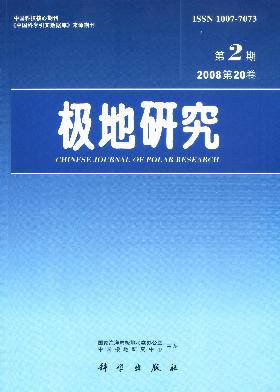GRV 99027 is a Martian lherzolitic shergottites(L-S)with poikilitic,nonpoikilitic and melt pocket textures.The mineral assemblages in GRV 99027 mainly include olivine(55 vol%)and pyroxene(37.5 vol%),minor maskelynite(6 vol%)and chromite(1.5 vol%),trace whitlockite and troilite,and so on.The paper describes the mineralogy and petrology of GRV 99027,and further investigates the geochemical characteristics of the REE and H isotopes in the GRV 99027.The ∑REE in GRV 99027 is relatively low;HREE is rich in olivine and pyroxene grains;LREE is rich in plagioclase with high positive δEu;high ∑REE value is found in rare mineral whitlockite(less than 0.2 vol %),LREE≈HREE,and whitlockite has negative δEu abnormity.The REE distribution patterns of the whole-rock of GRV 99027 is similar to that of L-S Martian meteorites,while is different from that of other SNC Martian meteorites,indicating that they came from different location of Mars parent body.GRV 99027 has highδD value.Different water-bearing minerals give different contribution for δD value.The δD of phosphates generally has no correlation with water content,and δD has weak negative correlation with water content.GRV 99027 can be classified as an L-S Martian meteorite based on mineralogical assemblage patterns,REE distribution patterns,and hydrogen isotope of the GRV 99027.The isotope data of Sr,Nd,Pb,Os and REE from other L-S Martian meteorites were collected to discuss the formation history of the GRV 99027.As other L-S Martian meteorites,GRV 99027 originated from part of Mar's mantle;about 4 Ma ago,after one strong impact event,the parent body of the meteorites were ejected from deep mantle into space,and travelled for a different duration in space(indicated by different cosmic exposure time),and captured by the Earth later in different time,and finally fell on the Antarctica as L-S Martian meteorites.

